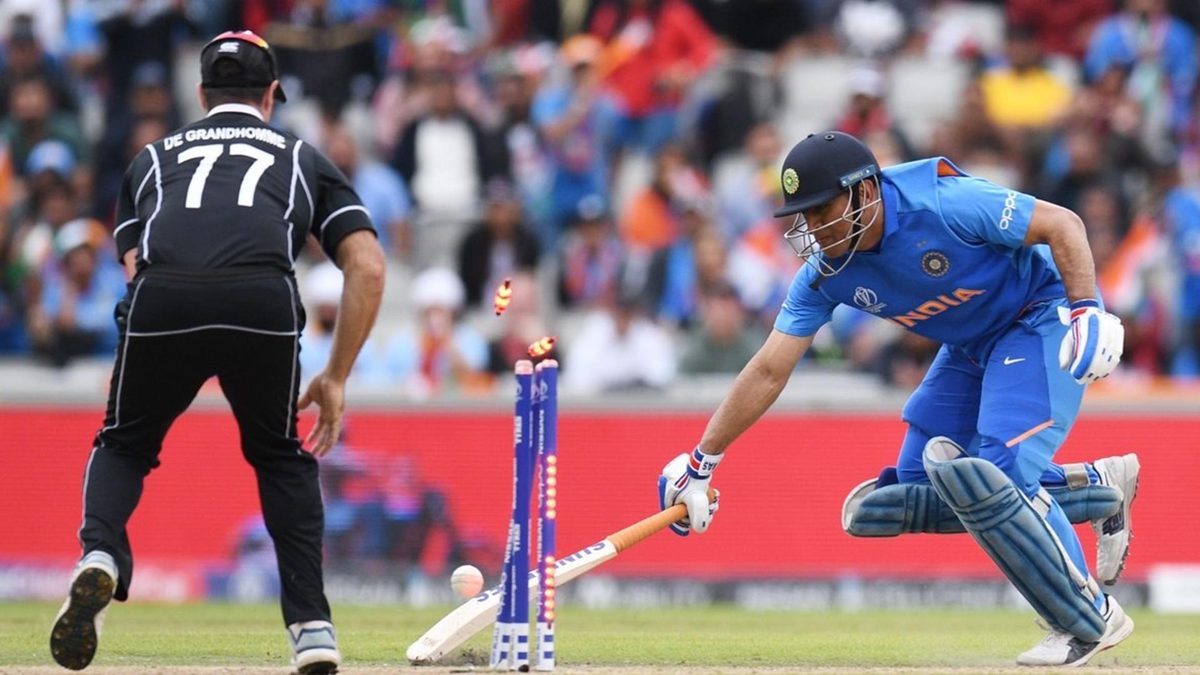
Despite their unfair nature, single-elimination knockouts are, and will remain, an intrinsic part of the cricket World Cup.
To bet on the World Cup with our Match Centre Partners bet365 head here.
Two factors are at play here. First, India have not had a great run at global tournaments of late. They topped their respective groups at the 2015 and 2019 World Cups as well as the 2017 Champions Trophy, but did not win the trophy in any of these.
India also lost the finals of the 2019-21 and 2021-23 World Test Championships, as well as the semi-finals in the 2016 and 2022 T20 World Cups. While combining formats is not necessarily prudent, the combined run has helped build the narrative of India being an outstanding side that fails at the knockouts.
India’s stupendous run at the 2023 World Cup – they have won eight matches in a row, most of them one-sided, to ensure the top spot in the league – has brought a feeling of deja vu among fans and pundits alike.
It has also made some question of the legitimacy of knockout matches, and one can see why. One bad day undoing an entire tournament’s worth of terrific performances does not seem fair.
India miles ahead of their rivals at the moment.
There’s a good case for the top two qualifying teams to have a second chance during the finals phase. #WorldCup2023 #Finals— Tom Moody (@TomMoodyCricket) November 5, 2023
Moody perhaps hinted at the Page playoffs system, used in Australian football since the 1930s. The IPL introduced it to cricket in 2011, and several other leagues had followed suit. It allows the top two teams a second shot even if they lose their first Playoff match.
The Hundred has taken a curious spin on the method by putting the top-ranked team into the final, while the second- and third-placed sides play a solitary semi-final. It does not give the best team in the league a lifeline, but it puts them at an advantage.
In a traditional semi-final-and-final structure, every team begins the round on the same footing. All prior advantage is wiped out. Much like every round of Grand Slam tennis.
What makes a fair format?
If the sole purpose of a tournament is to determine the best contestant, few methods are as robust as the round-robin league or its multiples. Each team plays every other the same number of times, giving them an equal bite at the top spot. The matches not only form a reasonably large sample but are also diverse enough to put teams against all challenges. There is also no question of teams being eliminated after a bad day.
There are numerous examples of the round-robin league – single or double – in high-profile sporting tournaments, especially in football. The County Championship, cricket’s oldest national first-class domestic competition, follows the same.
Despite its obvious fairness, the method falls short on two counts. First, it is often too long. The 2024 T20 World Cup will feature 20 teams. A round-robin league will involve an intimidating 190 matches. Even if the teams are split into two, the count will still be 90 – before the top teams from both groups are combined.
There is another problem as well. If a team is significantly superior to others, the champion may be determined with several matches left in the tournament. For instance, at the 2023 World Cup, India were guaranteed of a top spot by Match 37 of a 45-game league. It is impractical, particularly for a large number of teams in a format facing threats of extinction.
Chess addresses both problems with the Swiss-system tournament (Swiss league). There, too, everyone plays an equal number of matches, and no one gets eliminated after one defeat. However, it typically involves numerous simultaneous matches, not something the cricket World Cup has been comfortable with.
The Playoffs system, of course, gives teams a chance. Yet another variant is to pick the best two teams – from one giant group or two groups – and pit them in an odd number of finals. The NBA does that, as did the triangular ODI tournaments synonymous to Australian summers between the 1980s and the 2000s.
Fair methods are many, but… are they needed?
But are World Cups meant to be fair?
Enough on the most scientific method. This is the World Cup, where the best teams in the world come together to sweat it out for ultimate glory in the format.
True, there is reason in keeping the best teams in the contest for long by allowing them more opportunities than other teams. At the same time, that also reduces the chance of upsets, of teams that have barely scraped through knocking the hot favourites out of the tournament.
It is in the nature of the human mind, especially of the neutral viewer, to side with the underdog – something that even extends to fiction. It may have roots in our inherent desire for equality – that study is better left to experts – but whatever it is, we want to see the unfancied take down the big bad bully whose juggernaut has pulverised every side that had dared to cross their way.
Knockouts matches provide us that. The concept, while undoubtedly flawed, puts even the strongest team in jeopardy the moment they cross the safety of the league stage. From there, they are not allowed even one bad day. That makes the strongest side of the round as vulnerable as the weakest.
The best side lifting the trophy, while a fair concept, does not make great stories. The more the knockout matches, the higher the probability of upsets, and any sport can do with that.
That is where emotion – and hence, viewership – is. No one, after all, celebrates the tales of Goliath’s triumphs.








